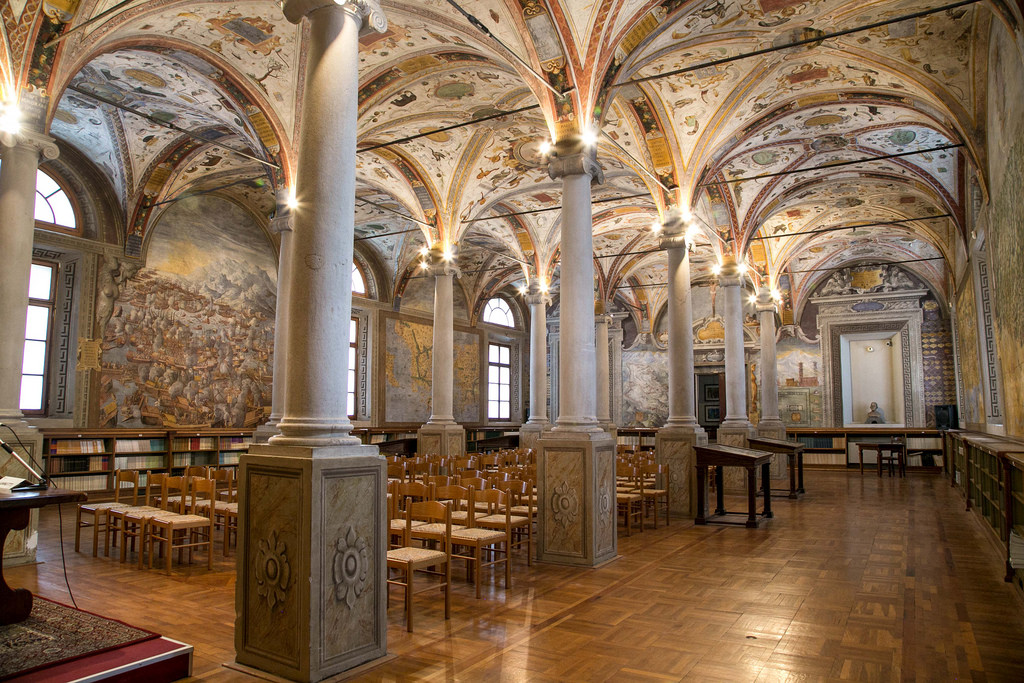Cities in international perspective: Parma
Edited on
22 January 2020In the Welcoming International Talent project, seven cities aim at sharing knowledge, improving policies and implementing best practice projects in their international student cities. But why are these specific cities participating in the WIT project? Each city will explain what they can contribute and what they would like to learn from this knowledge exchange. This time: Parma, Italy.

The Italian city of Parma (founded in 183 BC by the Romans) is located in the middle of the northern part of the country, an hour train ride away from Bologna and Milan. Parma has, during the middle age and the modern age, acquired a noteworthy reputation thanks to its important cultural and historical heritages. Parma is considered the Capital of the Italian food valley and has been awarded as UNESCO Creative City of Gastronomy in 2015. The city has solid cultural roots and a very strong local identity.
Economy
Parma’s economic development thrives historically on the agri-food industry, covering the entire food chain: from typical products to food transformation and machinery. However, Parma’s economy is not only food-related, but extends to pharmaceutical and banking sector, manufacturing and digital services.
Education
The University of Parma, founded on the 13th off March 962, is one of the oldest universities in Europe. This state university holds 9 Departments with degree courses offered entirely in English. Approximately 25.000 students study at the University of Parma, over 5.000 students graduate yearly, and about 1.700 academic and administrative staff are employed at the university.
Since 2005 Parma hosts the headquarters of the European Food Security Authority (EFSA). Thanks to the arrival of this Agency, an international school has been opened in the city: the School for Europe. Originally set up for the children of EU officials, the school is now part of the city’s education system, providing multi-lingual teaching programs that cover a wide part of the education: ranging from kindergarten to high school. On an academic level the international education offer is complemented by the European College of Parma founded in 2004.
A diverse city
The city has about 196.000 inhabitants and thanks to its quality of life and its dynamic economy, Parma has always attracted many students and workers from all over Italy and abroad. The city counts 32.782 foreigners representing 16.7% of the resident population. The largest migrant communities are Romanians (4.400, 13.4%), Moldavians (4.213, 12.9%), Filipinos (2.668, 8.14%) and Albanians (2.597, 7.92%).
To maintain and improve its competitiveness, Parma needs to attract and maintain the best international talents, but it’s not that easy: Parma has to compete with highly attractive and dynamic larger cities, such as Milan.
 Welcoming International Talents
Welcoming International Talents
The Welcoming International Talents project fits perfectly in the city’s and the local stakeholders’ ambitions. Best practices implemented by the lead partner city, Groningen, and the initiatives realized by the other partner cities are both useful tools and boosts for the creation of an effective local strategy. That’s why transnational meetings are so inspiring.
The biggest challenges for Parma are creating friendly and helpful tools to attract and maintain international talents in the city by simplifying the bureaucracy and supporting the integration in the local community and at the same time raise the awareness amongst stakeholders and citizens that international talents are a key factor of the future development of the local community. At the beginning of the Urbact Welcoming International Talent project the city has gathered all actors who are interested in the subject: university, high schools, city cultural institutions, sport clubs and entrepreneurs' associations. In a second phase the most active companies in the attraction and maintaining of international talents have been involved too. The first meetings enlightened that stakeholders have already implemented many initiatives and that the city has both a good international community and all the basic assets to build up a common and effective strategy. Parma hopes to further develop this an to become an even more welcoming city to international talents.
 Submitted by Evite van Winkoop on
Submitted by Evite van Winkoop on
